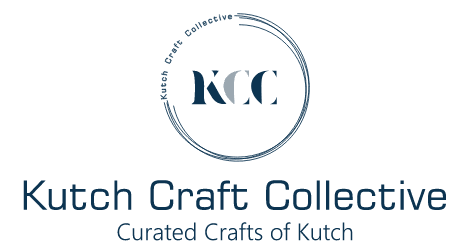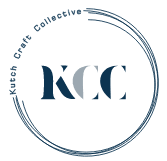Hard Material
Crafts
CARVED WOOD
In Kutch’s carved wood craft lives the combined skills, techniques, and traditions from craft regions in Sindh, Afghanistan, Rajasthan, and Gujarat. Kutch wood carvings are admired because artisans have mastered both shallow and deep relief work. Common deep relief designs include three dimensional peacocks, parrots and female musicians and dancers. Shallow relief work creates geometric floral designs. Both decorate architectural focal points, bird houses, and furniture. The carved wood tradition is passed on from father to son.


METAL BELL MAKING
Kutch’s Muslim Lohar community continues the generations-old tradition of metal bell making that originated in Sindh. Men shape recycled metal into bells, after which women coat the bells with burnished brass and copper. After firing the bells in a kiln, the tone is precisely set. The sound that emanates from each bell depends on the artisan’s skill and three factors: the size and shape of the bell’s body; the size and shape of the wooden strip hanging within the bell and the shape and curve of the bell’s bottom rim.
HANDCRAFTED KNIVES
Kutch artisans make two types of traditional knives. The chari has a steel or iron blade known as a fur and a handle made from wood, plastic, or brass. The chappu is composed of the same parts with an added spring that allows it to fold. Each knife is therefore the result of many artisans’ collaborative work. Some artisans specialize in crafting the blade, some in handle making, and others in polishing. A collaborative spirit strengthens the sector and together artisans supply for a consistent demand.


LAC TURNED WOOD
Lac has been used in Indian craft for centuries. It is derived from resin secreted by an insect indigenous to Kutch and other Indian regions. This resin is heated and mixed with groundnut oil to form a thick, opaque, decorative wood coating known as lacquer. Colored lacquer is applied to wood in layers and chiselled to create designs and effects. Eight traditional lacquer artisan families continue the craft in Kutch, designing and creating colorful kitchen and household accessories.
LEATHER CRAFT
The Marwada Meghwal community brought weaving and leather craft traditions from Rajasthan to Kutch. These leather craftsmen have worked closely with Maldhari cattle herders who traditionally supplied them with hides. The communities’ relationships have resulted in a fusion of cultural traits and the shared embroidery traditions that decorate Kutch leather goods. Leather craft products include fans, footwear, mirror frames, and lanterns. Most Kutch leather artisans reside in villages that border the Great Rann and the Banni grasslands.


MUD CRAFT
Kutch women showcase craft aesthetics in their homes with elaborate mud murals and paintings which decorate walls, furniture, and the shelves where kitchenware is stored, called abharai. Mud craft often replicates Kutch embroidery motifs but women also incorporate images of animals, birds, insects, and trees into their designs. Sometimes women use mud craft to share stories. Traditional murals were embellished with mica, though today mirrors and embossed metal are used to accent designs and impress guests.
POTTERY
In Indian mythology, Bhrama, the Creator of the universe, made a clay model of man into which he breathed life. The Indian potter is also known as Prajapati, the creator of man. In Kutch, the Kumbhar community molds local clay into countless forms of earthenware. Women decorate the pottery with community specific paintings. According to Indian tradition, porous earthenware should be replaced during festivals and significant occasions. This belief ensured the local market demand that sustained the craft for centuries.


SILVERSMITHY
Traditional tribal jewellery remains an integral part of village dress. Each silversmith specializes in a type of jewellery that embodies a particular community’s traditional design. The jewellers and the communities with whom they work have strong relationships since they have lived and worked together for generations. Kutch silver is known for its white quality which resists tarnish. Artisans use brightly colored glass called ‘meena’ to accentuate traditional designs.


